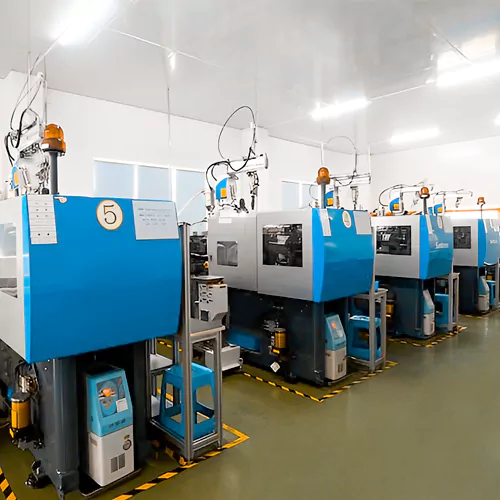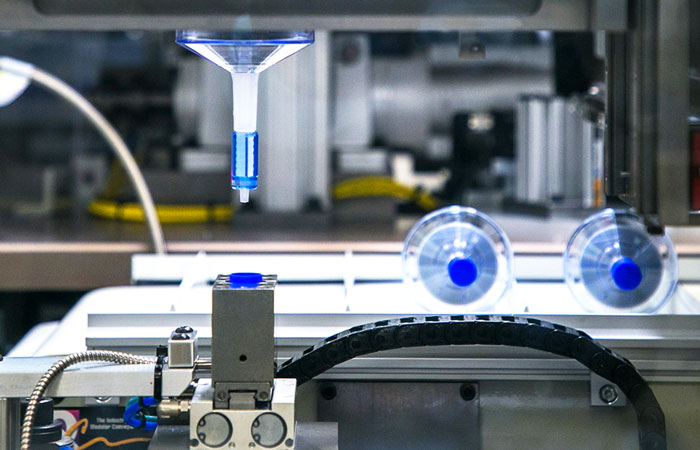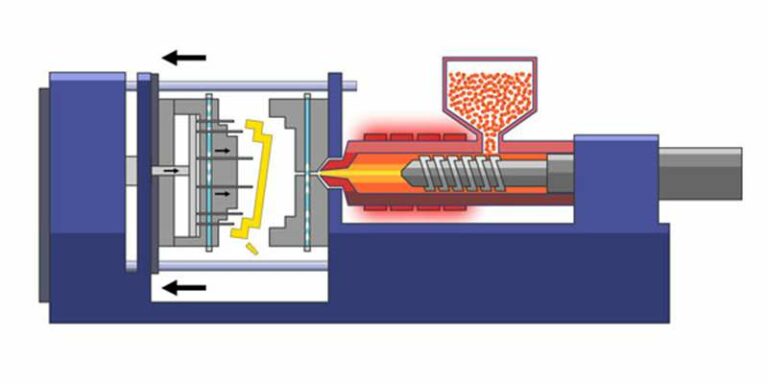The Function of Plastic Injection Molding in Developing Cost-efficient Industrial Components
The Function of Plastic Injection Molding in Developing Cost-efficient Industrial Components
Blog Article
Recognizing the Fundamentals of Plastic Injection Molding Procedures
Plastic shot molding acts as a keystone of modern production, supplying a systematic strategy to producing complex components with accuracy. This procedure not only incorporates the essential steps of melting and injecting materials into molds but likewise involves a nuanced understanding of various influencing elements, such as temperature and stress. As industries increasingly require performance and high quality, the details of this method become a lot more critical. Exploring these vital components can expose exactly how even minor changes can result in considerable renovations in manufacturing outcomes, questioning about the possibility for development in this recognized process.
What Is Plastic Shot Molding?
Plastic injection molding is a commonly used production procedure that changes polycarbonate and thermosetting materials into accurate and complex forms. This technique is favored for its capacity to create high quantities of similar parts with phenomenal accuracy, making it a crucial approach in numerous sectors, consisting of auto, durable goods, and clinical gadgets.
The procedure involves melting the chosen plastic material and infusing it into a mold and mildew under high stress. The mold, developed to the specifications of the wanted component, allows the molten plastic to take form as it cools down and solidifies. As soon as the material has actually set, the mold is opened, and the finished element is ejected.
Plastic shot molding uses a number of advantages, including reduced waste, uniformity in manufacturing, and the ability to integrate elaborate styles that may be challenging with other manufacturing techniques. Additionally, it supports a broad series of products, each giving special buildings that can be customized for certain applications. As markets proceed to introduce, plastic shot molding continues to be at the leading edge, enabling the growth of sophisticated products that satisfy advancing consumer demands.
The Injection Molding Process
The injection molding procedure is an innovative method that entails numerous crucial phases to produce premium plastic components. Plastic pellets are fed into a warmed barrel where they are melted right into a viscous fluid. This molten plastic is after that injected under high stress into a precision-engineered mold and mildew, which shapes the product into the desired form.
Once the mold and mildew is filled up, the plastic is allowed to strengthen and cool down, taking the form of the mold dental caries. Air conditioning time is important, as it influences the cycle time and the final residential properties of the molded component. After enough cooling, the mold and mildew opens, and the completed component is expelled utilizing ejector pins.

Products Utilized in Shot Molding
Various materials can be utilized in the injection molding process, each offering one-of-a-kind residential properties that deal with specific applications. One of the most commonly made use of materials consist of thermoplastics, thermosetting plastics, and elastomers.

Thermosetting plastics, like epoxy and phenolic materials, go through a chemical adjustment during the treating procedure, leading to a rigid, inflexible structure. These products are perfect for applications calling for high warmth resistance and architectural honesty, often made use of in automotive components and electric insulators.
Elastomers, including silicone and rubber-based materials, provide flexibility and strength. Their one-of-a-kind properties make them ideal for applications that demand flexibility, such as seals and gaskets.
Furthermore, specialized products like bio-based plastics and composites are getting grip for their environmental advantages and enhanced efficiency attributes, broadening the extent of shot molding applications in different markets. Recognizing the properties of these products is critical for picking the suitable type for certain tasks.
Advantages of Injection Molding
Injection molding sticks out as a highly efficient manufacturing process that supplies numerous advantages for creating complex parts with precision. One of one of the most significant benefits is the ability to create elaborate designs that would be difficult or impossible to achieve with various other approaches (Plastic Injection Molding). The procedure enables in-depth attributes and limited tolerances, guaranteeing high-quality components
Additionally, shot molding is understood for its fast production capabilities, making it a perfect choice for high-volume production. As soon as the mold and mildew is produced, components can be generated swiftly, lowering lead times visite site and boosting total performance. This effectiveness not just decreases manufacturing costs yet additionally gives an one-upmanship in the marketplace.
The versatility of materials made use of in injection molding further boosts its charm. A vast array of thermoplastics and thermosetting polymers can be utilized, allowing suppliers to choose materials that finest meet their specific demands, including adaptability, heat, and toughness resistance.
Additionally, the process lessens waste, as excess product can typically be recycled and recycled. This sustainability aspect adds to a decreased ecological effect, making shot molding a responsible production selection. Overall, the benefits of shot molding make it a recommended method for lots of industries.
Aspects Influencing Item High Quality
While numerous factors can influence product top quality in injection molding, understanding these aspects is crucial for attaining optimal results. Secret elements consist of product option, processing parameters, and mold and mildew layout.
Material choice plays an why not find out more essential role, as different polymers exhibit special residential or commercial properties that impact flowability, toughness, and thermal security. Poor product selection can lead to defects such as warping or incomplete dental filling.
Processing specifications, including stress, temperature, and cycle time, should be carefully controlled. Variations in these settings can result in disparities partially dimensions and surface area finish. For example, excessively high temperature levels might create destruction of the polymer, while insufficient pressure can result in short shots.
Mold design is equally vital, as it establishes the flow of the molten plastic and the cooling process. Poorly made molds might cause irregular air conditioning rates, causing residual tensions and dimensional inaccuracies.

Conclusion
Finally, plastic shot molding offers as a critical manufacturing procedure that enables the reliable manufacturing of premium parts. Proficiency of the shot molding process, including the understanding of products and the impact of different elements on product quality, is crucial for achieving optimum outcomes. The advantages of this approach, such as cost-effectiveness and layout adaptability, additional emphasize its significance across numerous markets, strengthening its standing as a favored option for high-volume production.
Plastic injection molding serves as here a cornerstone of contemporary manufacturing, giving a methodical strategy to generating complicated components with precision.Plastic injection molding supplies a number of advantages, consisting of lowered waste, uniformity in production, and the capacity to integrate elaborate designs that might be challenging with various other manufacturing techniques (Plastic Injection Molding). As sectors continue to innovate, plastic injection molding continues to be at the forefront, enabling the advancement of advanced items that meet advancing customer needs
The shot molding process is an innovative strategy that involves numerous key phases to create premium plastic components.In final thought, plastic shot molding serves as a vital manufacturing process that makes it possible for the effective manufacturing of premium parts.
Report this page